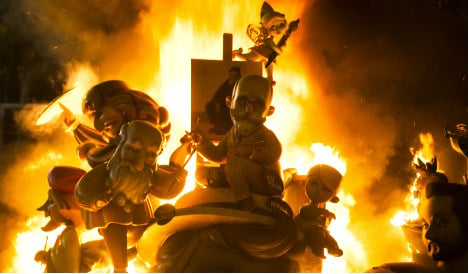Thousands of people squeezed into Valencia’s main square to watch the sculptures go up in flames in a festival that fills the streets with smoke and firecrackers.
In pics: Burning end in Valencia to Las Fallas 2015.
Las Fallas is a week-long celebration in Valencia held every year to honor Saint Joseph, the patron saint of the carpenter’s guild.
The festival is marked with the construction of hundreds of giant wooden, cardboard, or papier-mâché sculptures, known as ninots.
These figurines are often satirical in nature and send up the politicians of the day.
Click here to see a gallery of politicians as you have never seen them before.
The ninots are burned on the final day of Las Fallas when the city sky is filled with fireworks.




 Please whitelist us to continue reading.
Please whitelist us to continue reading.
Member comments